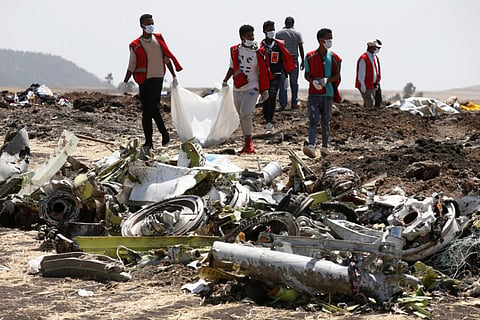Safety of passengers can’t be compromised
Regulators prudent in grounding Boeing 737-800 Max models until concerns are addressed

We live in an age where air travel has become routine, where flying from one country to another is little different from taking a coach, where taking a plane trip is almost an everyday occurrence. And throughout, the ease of air travel has been accommodated by the advent of new aircraft — models that are technologically advanced and more fuel-efficient.
At the forefront of this revolution in the air are aircraft such as the Airbus A350, Boeing’s 777’s latest models, advancements to the latest Airbus 320 neo range and, significantly, Boeing’s 737-800 Max range. It’s this latest configuration of the world’s best-selling airliner that is at the centre of a largely world-wide grounding order — moves that come following two fatal plane crashes, the most recent involving Ethiopian Airlines.
For Boeing, one of the commercial advantages of its 737-800 Max range is that it builds upon proven technology and offers airlines an opportunity to increase profitability and range without having to incur the costs of fully retraining the flight crew. While that’s the marketing stratagem, there now appears to be concerns that the new technological advances are not without questions, as the Ethiopian crash and a previous one involving LionAir would suggest.
While investigators are still seeking the root causes of both crashes, the pilots of both aircraft did request permission for emergency landings. Pilots elsewhere have reported that the nose of the plane lowers when the autopilot engages. For its part, Boeing has advised pilots to follow a procedure to counter the issue should it recur.
Above all, the safety of air passengers must be paramount when it comes to flying. Pilots themselves must have full confidence in their aircraft and ground service crew need to be fully conversant in every new directive issued by the manufacturer or federal regulators. And passengers must, by natural extension, be fully at ease knowing that the aircraft they are about to board has the fullest and most comprehensive proven safety record.
When it comes to the apparent issues facing the Boeing 737-800 Max — an aircraft that has generated some $600 billion (Dh2.2 trillion) in orders with several hundreds already delivered to airlines the world over — there can be no compromises that may be patched over by advisories to cockpit crews.
Should there be one element of doubt in this entire aviation equation, it is incumbent on regulators and airlines alike to ground aircraft models until such a time as that doubt is fully removed. The move to halt these aircraft from flying is prudent, regardless of the inconvenience caused. Safety trumps everything.
Sign up for the Daily Briefing
Get the latest news and updates straight to your inbox



